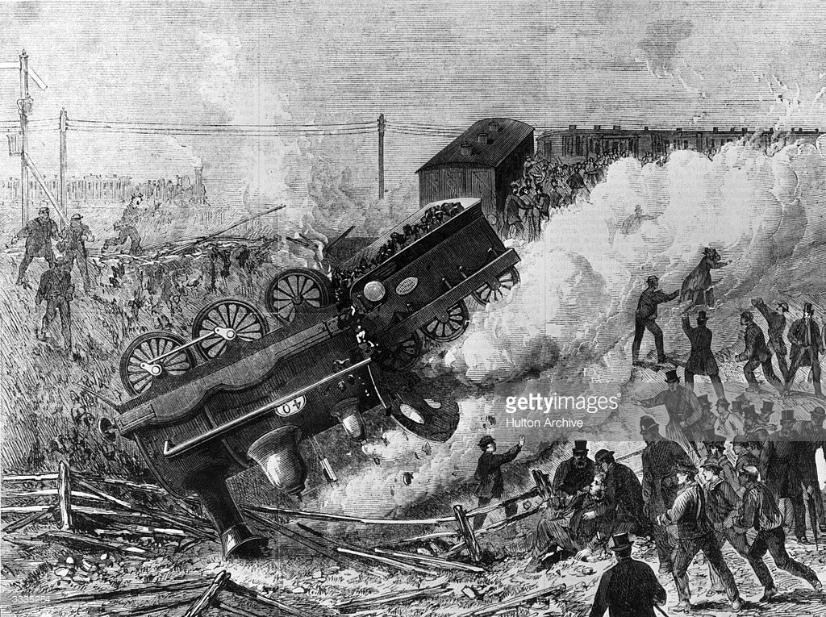
1868

GETTY IMAGES
Rescue workers surround an overturned engine after a railway accident on the London,
Brighton & south Coast Railway at
Pouparts Junction near Clapham Junction, London, 19th February 1868.
Original Publication: Illustrated London News - pub. 1868
POUPART'S JUNCTION
19th FEBRUARY 1868
Extracted and adapted from the report by
H.W. Tyler Captain